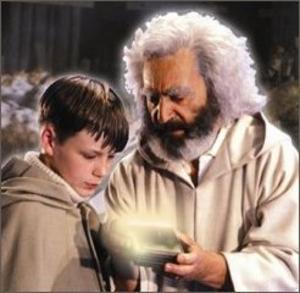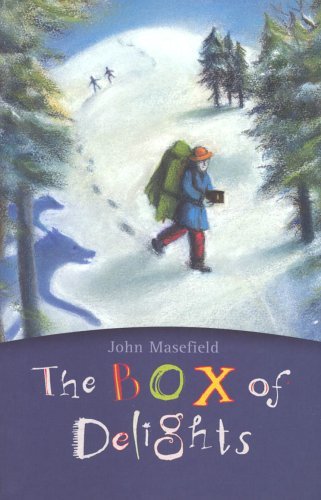Re-opening the ‘The Box of Delights’
‘The Box of Delights’ by John Masefield is, for me, the ultimate Christmas story for children. But I wanted to understand for myself, just what is it that makes it so deliciously nostalgic and magical? The inner child in me looks forward to watching the BBC TV adaption of the book each Christmas with my children. But this year I decided to re-read the book, in order to try and understand just what makes it so special.
Firstly I think that it is because the book was first published in 1935. It is the perfect setting for the idyllic Christmas of the past. A Victorian Christmas has the edge of the huge class divide and every tale of Christmas luxury is tinged with a suffering, poverty-stricken soul. The two World wars were an austere period, but the 1930’s falls just right, in a time of hope and when treats were more readily available. A Christmas from the past always feels as if it is truer to the spirit of Christmas, because it is the spiritual aspect that is the most satisfying aspect.
However, before we get on to the ‘Spirit of Christmas’, let’s talk indulgence. The food descriptions in ‘The Box of Delights’ are just mouth-watering. Right from the start it is fresh muffins from Bob the Bakers and hot buttered eggs (I have no idea what they are, but I want some). This was an era of wonderful vintage treats such as plum pudding. Plum Pudding. Even the sound of the words is deep and satisfying. I have never had a home-made plum pudding but in my mind it is dark, shiny and succulent with whole baked plums, and wisps of steam rising from its smooth surface. Then in the book there is the occasion when the hero Kay and his friend Peter raid the larder for a pre-dawn breakfast. This is the description:
“They went down into the larder, and got themselves ham and bread, which they spread with blobs of butter. Then, each had a big mince-pie, and a long drink from a cream pan.”
Now I would probably be a bit sick if I ate all that at dawn, but the description is so lush I love the idea of it. Also, having a larder to secretly scoff in is so much more exciting than just raiding a fridge.
The other elements which make this story such a Christmas classic are the following: lots of magical and impossible things happen, it is always snowy like a Victorian Christmas card and it is a battle of good and evil so lots of nastiness and villains. Perfect. Well, at least it is for me, but I was wondering, what would my children make of it? Yes they adore the TV version, but the book has more adventures and descriptions than the TV adaption could possibly include. I think they would find the old-fashioned vocabulary and descriptions a bit puzzling, but then the strangeness of it also adds to its mystery and magic. Also there are some wonderful words that Masefield I am sure made up but which should be part of the Oxford dictionary. Words such as ’rumpage’ and ‘scrobble’.

Kay Harker (Devin Stanfield) and Cole Hawlings (Patrick Troughton) holding the Box of Delights
What then, is the ‘Christmas Spirit’ that it contains? Why do we put the book down with a satisfied sigh? Well firstly, just as I have described already, it has all the gorgeous elements that dress the Christmas scene: snow, scrumptious food and delightful descriptions of Christmas entertainments, particularly at the Bishop’s palace when there is a party, dancing round the tree, Punch and Judy and lots of gifts, yummy food and crackers. Secondly there is magic in every page; whether it is talking animals, going into the past, flying cars and all the magic that the ‘Box of Delights’ can conjure. The most important element that gives it real depth though is the battle of good and evil. The villainous wizard Abner Brown has kidnapped all the church folk that are necessary to hold a special Christmas Eve service at the cathedral. He does so in order to find the Box of Delights and then finally just out of spite. So it is a battle to defeat his evil intentions, a battle fought with magic and courage, which eventually light and goodness defeats. Symbolically the cathedral is plunged into darkness by the evil acts of Abner Brown but just at the end, when the evil has been defeated, the cathedral lights are fixed and it ends with the service going ahead. We love this battle of good over evil. For a child it is lovely to feel that frisson of fear whilst in the comfort of the home. It makes life feel even better, to be able to see darkness and appreciate the light all the better.




